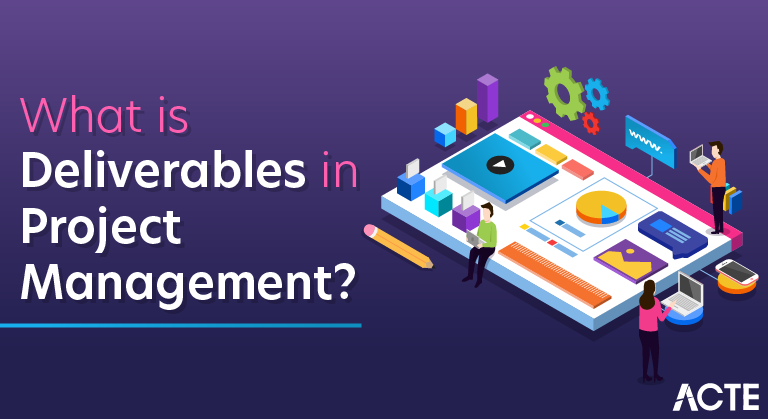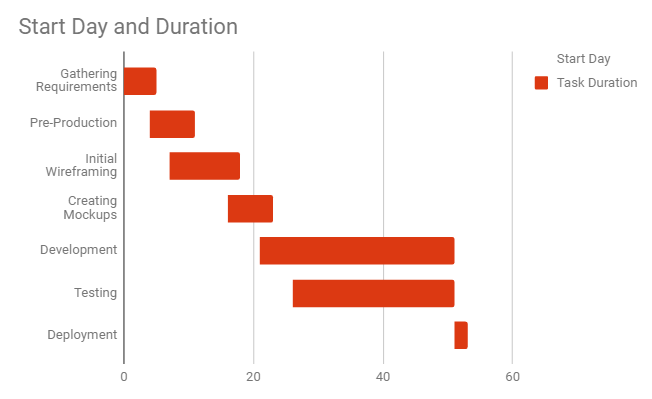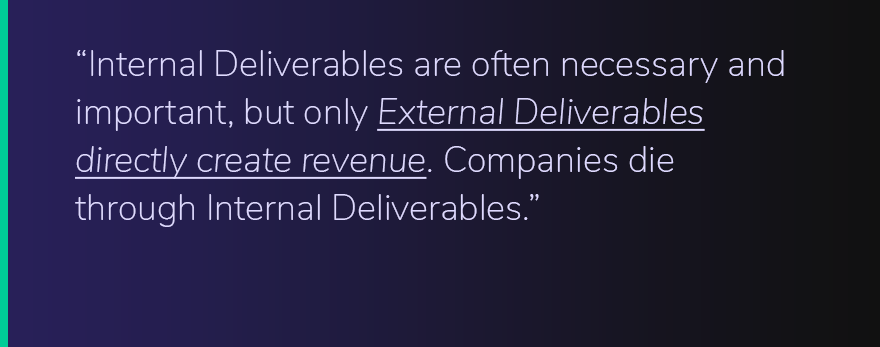
What is Deliverables in Project Management? – Learning Guide
Last updated on 15th Jul 2020, Blog, General
A deliverable is an element of output within the scope of a project. There can be one or several deliverables within a single project. Deliverables can be items that are supposed to be sent externally to a customer or just to an internal manager. Either way, it usually means that the individual is expecting the deliverable on a certain date. When a deliverable is sent, that means a big deadline or milestone has been met. Often, deliverables are dependent on another deliverable being completed first. This is common when managing a project with a multiple milestones, such as events. So what is a deliverable in project management? Simply put, it’s a tangible action item within a project.
The term deliverables is a project management term that’s traditionally used to describe the quantifiable goods or services that must be provided upon the completion of a project. Deliverables can be tangible or intangible in nature. For example, in a project focusing on upgrading a firm’s technology, a deliverable may refer to the acquisition of a dozen new computers.
On the other hand, for a software project, a deliverable might allude to the implementation of a computer program aimed at improving a company’s accounts receivable computational efficiency.
Projects create deliverables, which are simply the results of the project or the processes in the project. That means a deliverable can be something as big as the objective of the project itself or the reporting that is part of the larger project.
Another way to put that is that there are inputs and outputs in any type of project. That being what you put into the project, such as data, resources, etc., and then what comes out, which are the deliverables. Again, those deliverables can be a product or service and it can also be the documentation that is part of the project closure to show that the project is complete and everything has been signed off.
There is a distinction between project and product deliverables. Project deliverables are such outputs as the project plans, project reports and even meeting minutes. Product deliverables, on the other hand, could be hardware, software, mobile applications, contracts, or even test assessment results.
The deliverables that clients and stakeholders expect at the end of the project are the product or service, of course, but there is also paperwork, as noted. These documents, when completed, are deliverables that clients and stakeholders need in order to evaluate the progress or completion of the project.
This paperwork can include:
- Signed contracts
- Finalized expense reports
- Other types of project reports which show how work is proceeding versus project plan estimations
Deliverables can vary according to the project’s specifications and the stakeholders’ requirements. But all clients and stakeholders want deliverables that thoroughly wrap up the project at its closure and measure performance against expectations throughout the project.
Project managers’ reports are the means by which these types of deliverables are presented to clients and stakeholders. Different stakeholders have different needs, so flexibility and customization is import for effective reporting. In order to meet their needs, a project management software must be able to filter the many data inputs to deliver the proper output.
Project Deliverables Examples
As you’ve seen so far, project deliverables can be of any type – tangible and intangible, big and small, internal and external. They can describe the project’s goals or the path to reach those goals.
To help you understand them even better, there are a few examples of project deliverables:
- A SWOT analysis of a competitor to identify opportunities. Can be for internal or external stakeholders.
- A work breakdown structure created at the start of a house construction project.
- A project scope statement that will guide the internal project team and define the project for external stakeholders.
- A gap analysis report created to identify weaknesses and opportunities when compared to a competitor.
- A design presentation made for the clients to help them understand the project’s goals.
- A website wireframe made for the development team.
- An inspection report created during a construction project that the client will use for compliance purposes.
- An eBook created by the marketing team to promote a new product.
- An whitepaper created by the development team to help clients understand a new product.
- A document detailing the quality control process a factory will use to ensure products are up to the client’s standards.
- A Gantt chart created at the start of a project to define its timeline and milestones.
These are just some project deliverables examples. You can have virtually anything as a deliverable as long as stakeholders agree to it. If it is the product of deliberate work, and it helps you reach the project’s objective, it can be classified as a deliverable.

In the next section, I’ll cover the more important parts: how to define project deliverables and how to manage them.
- project plan
- project budget
- project charter
The best way to understand project deliverables is through examples. Here are some examples from various areas.
Project deliverables: Examples From Real Projects
I’ve selected examples from the real world. These will make the concept more clear to you.
DELIVERABLES FOR CONSTRUCTION PROJECTS
- Design drawings
- Proposals
- Project reports
- Building permits
- Finished product – a building, a road section, a bridge
DELIVERABLES FOR ENGINEERING PROJECTS
- Design drawings (electrical, mechanical)
- Product prototypes
- Finished product – a machine, a car
- Product manual
- Quality check reports
- Progress reports
DELIVERABLES FOR WEBSITE DEVELOPMENT
- Customer requirement specification (external link)
- Web design proposal (as PDF)
- Website content
- User training session
- Finished website
DELIVERABLES FOR IT PROJECTS
- Requirement specification (document)
- User interface
- Backend development
- Set up of Test system
- Set up of Live system
- Data migration
- User training
DELIVERABLES FOR CONSULTING
- Initial briefing report
- Process maps
- Project plan
- Progress reports
- Final report
Internal vs External Deliverables
A common way to categorize deliverables is to divide them into “external” and “internal” deliverables. There’s an easy method for defining them:
- Any work done that is not a part of doing business with clients or customers is an internal deliverable
- Any work done to fulfill a client’s demands or to win more business is an external deliverable
You can think of internal deliverables as anything you create as a part of running the business. Doing taxes, keeping accounts, creating corporate documents – these are all internal deliverables. You need them to run the business, but they don’t really generate revenue.

Most of the time you would know whether a deliverable is internal or external based on who it is created for. But if you’re unsure, just ask yourself: “is this deliverable going to leave the organization?”
If the answer is “yes”, then it would be an external deliverable.
Deliverables vs Milestones
Another source of confusion for new project managers is the difference between deliverables and milestones.
Milestones are checkpoints in the course of a project. You can insert them at any point to mark the completion of an important activity. They don’t have deadlines, nor do they have an impact on the project’s objectives. They are simply a way to keep track of the project’s progress.
You’ll create milestones to break down a complex deliverable into its constituent parts. For example, if your deliverable is to create a set of “high-level requirements”, one of your milestones might be “document current processes”.
